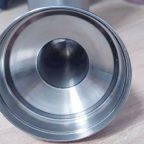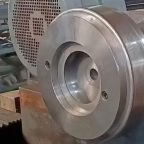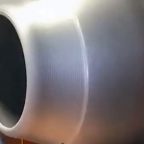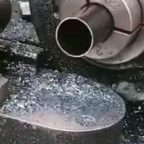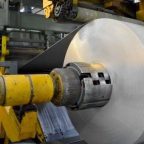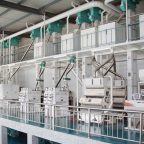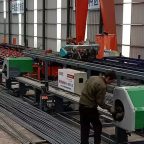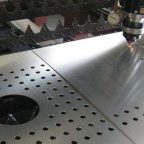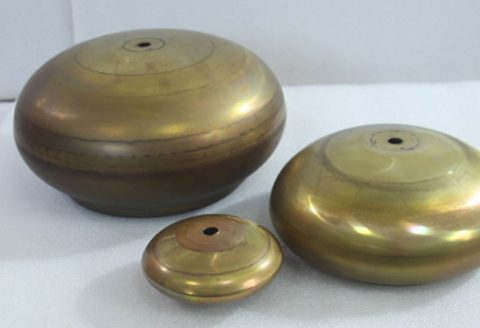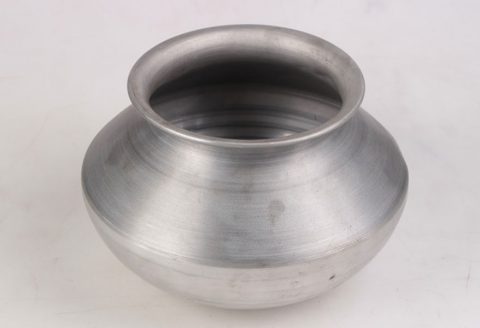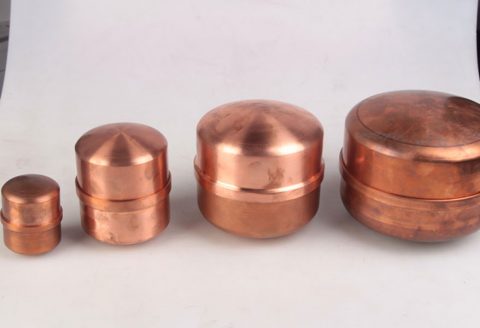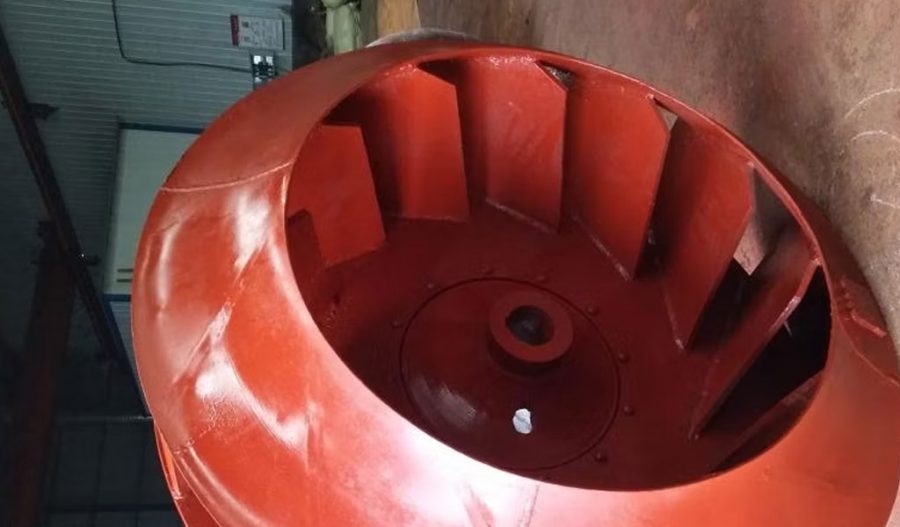
A centrifugal blower fan impeller is a critical rotating component within centrifugal blower systems, designed to impart kinetic energy to air or gas, facilitating its movement through ducts, chambers, or industrial processes. Often referred to simply as an impeller, this mechanical device is central to the operation of centrifugal fans, which are widely used in applications such as HVAC systems, industrial ventilation, combustion air supply, and material handling. The impeller’s design, material, and operational characteristics significantly influence the blower’s efficiency, performance, and durability. This article provides a comprehensive exploration of centrifugal blower fan impellers, covering their history, design principles, types, materials, manufacturing processes, performance metrics, applications, and future trends.
Historical Context
The development of centrifugal blowers and their impellers traces back to the Industrial Revolution, when the need for efficient air movement in factories, mines, and steam-powered machinery became paramount. Early ventilation systems relied on rudimentary axial fans or bellows, but these were limited in their ability to generate high-pressure airflow. The invention of the centrifugal fan is often credited to Russian engineer Alexander Sablukov in 1832, who designed a radial-flow device for mine ventilation. Sablukov’s design featured a rotating impeller that drew air in axially and expelled it radially, leveraging centrifugal force to increase air pressure.
By the late 19th century, centrifugal blowers had evolved with advancements in metallurgy and machining, enabling the production of more robust and efficient impellers. The introduction of electric motors in the early 20th century further accelerated their adoption, as impellers could now be driven at consistent speeds, improving reliability. Over time, the impeller became a focal point for engineering innovation, with researchers and manufacturers refining its geometry, materials, and aerodynamic properties to meet diverse industrial demands.
Fundamental Principles of Operation
The centrifugal blower fan impeller operates on the principle of centrifugal force, whereby air or gas is accelerated outward from the center of rotation to the periphery of the impeller. The impeller is typically housed within a volute or scroll-shaped casing, which channels the airflow and converts kinetic energy into static pressure. The process can be broken down into several key stages:
- Air Intake: Air enters the impeller axially through an inlet, typically located at the center of the impeller’s hub.
- Acceleration: As the impeller rotates, its blades (or vanes) impart kinetic energy to the air, accelerating it radially outward.
- Pressure Increase: The radial motion of the air, combined with the geometry of the impeller and casing, increases the air’s static pressure.
- Discharge: The high-pressure air is expelled through the outlet of the casing, often into a duct system or directly into the environment.
The impeller’s efficiency depends on its ability to minimize energy losses due to turbulence, friction, and flow separation. This is achieved through careful design of the blade shape, angle, and spacing, as well as the impeller’s diameter and rotational speed.
Governing Equations
The performance of a centrifugal blower fan impeller is governed by fundamental fluid dynamics principles, including the Euler turbomachinery equation and Bernoulli’s principle. The Euler equation for turbomachinery relates the power imparted to the fluid to the impeller’s rotational speed and the change in tangential velocity:
[ P = \dot{m} \cdot \omega \cdot (r_2 v_{\theta 2} – r_1 v_{\theta 1}) ]
Where:
- (P) is the power transferred to the fluid,
- (\dot{m}) is the mass flow rate,
- (\omega) is the angular velocity of the impeller,
- (r_1) and (r_2) are the inlet and outlet radii,
- (v_{\theta 1}) and (v_{\theta 2}) are the tangential velocities at the inlet and outlet.
Bernoulli’s principle is also critical, as it describes the trade-off between kinetic energy (velocity) and potential energy (pressure) within the impeller and casing system. These equations guide the design of impellers to optimize airflow, pressure, and efficiency.
Types of Centrifugal Blower Fan Impellers
Centrifugal blower fan impellers are classified based on the orientation and shape of their blades, which determine their suitability for specific applications. The three primary types are forward-curved, backward-curved, and radial (or straight) impellers. Each type has distinct aerodynamic characteristics, efficiency profiles, and operational advantages.
Forward-Curved Impellers
Forward-curved impellers, also known as squirrel-cage impellers, feature blades that curve in the direction of rotation. This design results in a high volume of airflow at relatively low pressure, making forward-curved impellers ideal for applications requiring large air movement, such as HVAC systems and residential ventilation.
Characteristics:
- Blades are typically short and numerous (20–60 blades), with a pronounced curvature.
- High airflow capacity but lower static pressure compared to other types.
- Susceptible to dust accumulation and clogging due to the blade shape.
- Lower efficiency (typically 60–75%) due to increased turbulence and flow separation.
Applications:
- Air conditioning units
- Domestic furnaces
- Low-pressure ventilation systems
Backward-Curved Impellers
Backward-curved impellers have blades that curve against the direction of rotation, offering higher efficiency and the ability to handle moderate to high static pressures. These impellers are widely used in industrial applications where energy efficiency and durability are critical.
Characteristics:
- Fewer blades (8–12) with a backward slant, reducing turbulence.
- Higher efficiency (80–90%) due to smoother airflow and reduced losses.
- Capable of operating at higher speeds and pressures without stalling.
- Less prone to dust buildup, making them suitable for particulate-laden air.
Applications:
- Industrial ventilation
- Dust collection systems
- Combustion air supply for boilers
Radial (Straight) Impellers
Radial impellers feature straight blades that extend perpendicular to the impeller’s axis of rotation. These impellers are designed for high-pressure applications and are particularly effective in handling air laden with dust, fibers, or other particulates.
Characteristics:
- Robust construction with 6–12 straight blades.
- Moderate efficiency (70–80%) but high durability.
- Excellent for material handling due to resistance to abrasion and clogging.
- Generates significant noise due to the abrupt interaction of blades with airflow.
Applications:
- Pneumatic conveying systems
- Industrial exhaust systems
- Material handling in cement and mining industries
Comparison Table of Impeller Types
| Feature | Forward-Curved | Backward-Curved | Radial |
|---|---|---|---|
| Blade Orientation | Curved in direction of rotation | Curved against rotation | Straight, perpendicular to axis |
| Number of Blades | 20–60 | 8–12 | 6–12 |
| Efficiency | 60–75% | 80–90% | 70–80% |
| Airflow Capacity | High | Moderate | Moderate to Low |
| Static Pressure | Low | Moderate to High | High |
| Noise Level | Moderate | Low | High |
| Dust Handling | Poor (prone to clogging) | Good | Excellent |
| Typical Applications | HVAC, residential ventilation | Industrial ventilation, dust collection | Material handling, high-pressure exhaust |
Impeller Design Considerations
Designing a centrifugal blower fan impeller involves balancing aerodynamic performance, structural integrity, and manufacturing feasibility. Key considerations include blade geometry, impeller diameter, rotational speed, and material selection.
Blade Geometry
The shape, angle, and number of blades significantly affect the impeller’s performance. Blade angle is typically defined as the angle between the blade and the tangential direction at the impeller’s periphery:
- Inlet Angle: Influences the smoothness of air entry into the impeller.
- Outlet Angle: Determines the direction and velocity of the discharged air.
For forward-curved impellers, the outlet angle is typically 120–150°, while backward-curved impellers have angles of 60–90°. Radial impellers have an outlet angle of approximately 90°.
Impeller Diameter
The impeller diameter directly affects the blower’s airflow and pressure capabilities. Larger diameters increase airflow but may require lower rotational speeds to avoid excessive tip speeds, which can lead to noise and vibration. The relationship between diameter and performance is governed by the fan laws:
[ Q \propto D^2, \quad P \propto D^2, \quad \text{Power} \propto D^5 ]
Where (Q) is airflow, (P) is pressure, and (D) is impeller diameter.
Rotational Speed
Rotational speed, measured in revolutions per minute (RPM), determines the impeller’s ability to accelerate air. Higher speeds increase airflow and pressure but also raise noise levels, power consumption, and mechanical stress. The tip speed ((v_{\text{tip}})) is a critical parameter:
[ v_{\text{tip}} = \omega \cdot r ]
Where (\omega) is the angular velocity and (r) is the impeller radius. Tip speeds are typically kept below 150 m/s to minimize noise and wear.
Material Selection
Impeller materials must withstand mechanical stresses, corrosion, and environmental conditions. Common materials include:
- Steel: Used for industrial applications due to its strength and durability. Carbon steel is cost-effective, while stainless steel offers corrosion resistance.
- Aluminum: Lightweight and corrosion-resistant, suitable for HVAC and low-pressure applications.
- Plastics (e.g., Polypropylene): Used in corrosive environments or low-cost applications.
- Composite Materials: Emerging in high-performance applications for their high strength-to-weight ratio.
Table of Material Properties
| Material | Density (kg/m³) | Tensile Strength (MPa) | Corrosion Resistance | Cost | Typical Applications |
|---|---|---|---|---|---|
| Carbon Steel | 7850 | 400–600 | Low | Low | Industrial blowers, exhaust |
| Stainless Steel | 8000 | 500–700 | High | High | Chemical processing, marine |
| Aluminum | 2700 | 200–300 | Moderate | Moderate | HVAC, lightweight systems |
| Polypropylene | 900 | 20–40 | High | Low | Corrosive environments |
| Fiberglass Composite | 1800 | 300–500 | High | High | High-performance, aerospace |
Manufacturing Processes
The manufacturing of centrifugal blower fan impellers involves precision engineering to ensure aerodynamic performance and structural integrity. Common processes include:
Casting
Used for complex impeller geometries, particularly for forward-curved impellers with intricate blade shapes. Sand casting or investment casting is employed for steel and aluminum impellers.
Fabrication and Welding
Backward-curved and radial impellers are often fabricated by cutting and shaping metal sheets, followed by welding the blades to the hub and shroud. This method is cost-effective for small production runs.
Injection Molding
Plastic impellers, such as those made from polypropylene, are produced using injection molding for high-volume, low-cost applications.
Additive Manufacturing
Emerging as a viable method for prototyping and producing complex impeller designs, particularly for composite materials. 3D printing allows for rapid iteration and customization.
Quality Control
Post-manufacturing, impellers undergo rigorous testing, including:
- Dimensional Inspection: Ensures blade angles and diameters meet design specifications.
- Balancing: Static and dynamic balancing to minimize vibration.
- Non-Destructive Testing (NDT): Detects cracks or defects in welds and castings.
Performance Metrics
The performance of a centrifugal blower fan impeller is evaluated using several key metrics, which are typically plotted on a fan performance curve:
- Airflow Rate (Q): Measured in cubic feet per minute (CFM) or cubic meters per hour (m³/h), indicates the volume of air moved.
- Static Pressure (P): Measured in inches of water gauge (in. WG) or pascals (Pa), represents the pressure difference generated by the impeller.
- Power Consumption: Measured in watts or horsepower, reflects the energy required to drive the impeller.
- Efficiency ((\eta)): The ratio of useful aerodynamic power to input mechanical power, expressed as:
[ \eta = \frac{\dot{m} \cdot \Delta P}{\text{Power Input}} ]
Where (\Delta P) is the pressure rise across the impeller.
Fan Laws
The fan laws provide a mathematical framework for predicting impeller performance under varying conditions:
- First Fan Law: Airflow is proportional to rotational speed ((Q \propto N)).
- Second Fan Law: Pressure is proportional to the square of rotational speed ((P \propto N^2)).
- Third Fan Law: Power is proportional to the cube of rotational speed ((\text{Power} \propto N^3)).
These laws are critical for scaling impeller designs and optimizing system performance.
Applications of Centrifugal Blower Fan Impellers
Centrifugal blower fan impellers are integral to a wide range of industries, each with unique requirements for airflow, pressure, and environmental conditions.
HVAC Systems
In heating, ventilation, and air conditioning (HVAC) systems, forward-curved impellers are commonly used for their high airflow capacity. They circulate air through ducts, ensuring thermal comfort in buildings.
Industrial Ventilation
Backward-curved impellers dominate industrial ventilation, providing efficient airflow in factories, warehouses, and cleanrooms. They are also used in dust collection systems to remove airborne particulates.
Combustion Air Supply
Radial impellers are employed in boilers and furnaces, delivering high-pressure air to support combustion processes in power plants and industrial facilities.
Material Handling
Radial impellers excel in pneumatic conveying systems, transporting bulk materials such as cement, grain, or coal through pipelines.
Chemical and Petrochemical Industries
Impellers made from corrosion-resistant materials like stainless steel or polypropylene are used in chemical processing plants, where they handle aggressive gases and vapors.
Table of Applications and Impeller Types
| Industry | Preferred Impeller Type | Key Requirements | Example Use Case |
|---|---|---|---|
| HVAC | Forward-Curved | High airflow, low pressure | Air conditioning units |
| Industrial Ventilation | Backward-Curved | High efficiency, moderate pressure | Factory exhaust systems |
| Combustion Air Supply | Radial | High pressure, durability | Boiler air supply |
| Material Handling | Radial | Resistance to abrasion, high pressure | Pneumatic conveying of cement |
| Chemical Processing | Backward-Curved, Radial | Corrosion resistance, high pressure | Fume extraction in chemical plants |
Challenges and Limitations
Despite their versatility, centrifugal blower fan impellers face several challenges:
Noise Generation
High rotational speeds and abrupt blade-air interactions generate significant noise, particularly in radial impellers. Noise reduction strategies include optimizing blade geometry, using sound-absorbing materials, and incorporating silencers in the casing.
Energy Efficiency
Forward-curved impellers, while effective for high airflow, suffer from lower efficiency, increasing operational costs. Backward-curved impellers offer better efficiency but are more expensive to manufacture.
Wear and Maintenance
Impellers handling particulate-laden air, such as in material handling, are prone to erosion and abrasion. Regular maintenance, including cleaning and balancing, is essential to extend impeller lifespan.
Flow Instability
At certain operating conditions, impellers may experience flow instability, such as stall or surge, leading to reduced performance and mechanical stress. Advanced computational fluid dynamics (CFD) simulations are used to mitigate these issues during the design phase.
Advances in Impeller Technology
Recent advancements in impeller design and manufacturing have enhanced performance, efficiency, and durability.
Computational Fluid Dynamics (CFD)
CFD simulations allow engineers to model airflow within the impeller and casing, optimizing blade geometry and minimizing losses. This has led to the development of high-efficiency impellers with complex, non-uniform blade shapes.
Variable Frequency Drives (VFDs)
VFDs enable precise control of impeller rotational speed, allowing blowers to adapt to varying airflow and pressure demands, improving energy efficiency.
Advanced Materials
The use of composite materials, such as carbon fiber-reinforced polymers, has resulted in lighter, stronger impellers with improved corrosion resistance and fatigue life.
Smart Impellers
Integration of sensors and IoT technology enables real-time monitoring of impeller performance, detecting issues like imbalance or wear before they lead to failure.
Future Trends
The future of centrifugal blower fan impellers is shaped by trends in sustainability, automation, and digitalization.
Energy Efficiency Standards
Global regulations, such as the EU’s Ecodesign Directive, are pushing manufacturers to develop impellers with higher efficiencies to reduce energy consumption and carbon emissions.
Additive Manufacturing
3D printing is expected to revolutionize impeller production, enabling the creation of lightweight, customized designs with reduced lead times.
Autonomous Systems
In industrial settings, impellers are increasingly integrated into autonomous ventilation systems, where AI algorithms optimize airflow based on real-time environmental data.
Green Materials
The shift toward sustainable materials, such as biodegradable composites, is gaining traction, particularly in applications requiring corrosion resistance.
Conclusion
The centrifugal blower fan impeller is a cornerstone of modern air-moving technology, underpinning critical applications across industries. Its evolution from rudimentary designs to highly engineered components reflects advances in aerodynamics, materials science, and manufacturing. By understanding the principles, types, and challenges of impellers, engineers and designers can continue to innovate, creating systems that are more efficient, durable, and environmentally friendly. As industries strive for sustainability and performance, the centrifugal blower fan impeller will remain a focal point for technological advancement, driving progress in ventilation, material handling, and beyond.
Maximize Tooling and CNC Metal Spinning Capabilities.

At BE-CU China Metal Spinning company, we make the most of our equipment while monitoring signs of excess wear and stress. In addition, we look into newer, modern equipment and invest in those that can support or increase our manufacturing capabilities. Our team is very mindful of our machines and tools, so we also routinely maintain them to ensure they don’t negatively impact your part’s quality and productivity.
Talk to us today about making a rapid prototype with our CNC metal spinning service. Get a direct quote by chatting with us here or request a free project review.
BE-CU China CNC Metal Spinning service include : CNC Metal Spinning,Metal Spinning Die,Laser Cutting, Tank Heads Spinning,Metal Hemispheres Spinning,Metal Cones Spinning,Metal Dish-Shaped Spinning,Metal Trumpet Spinning,Metal Venturi Spinning,Aluminum Spinning Products,Stainless Steel Spinning Products,Copper Spinning Products,Brass Spinning Products,Steel Spinning Product,Metal Spinnin LED Reflector,Metal Spinning Pressure Vessel,
